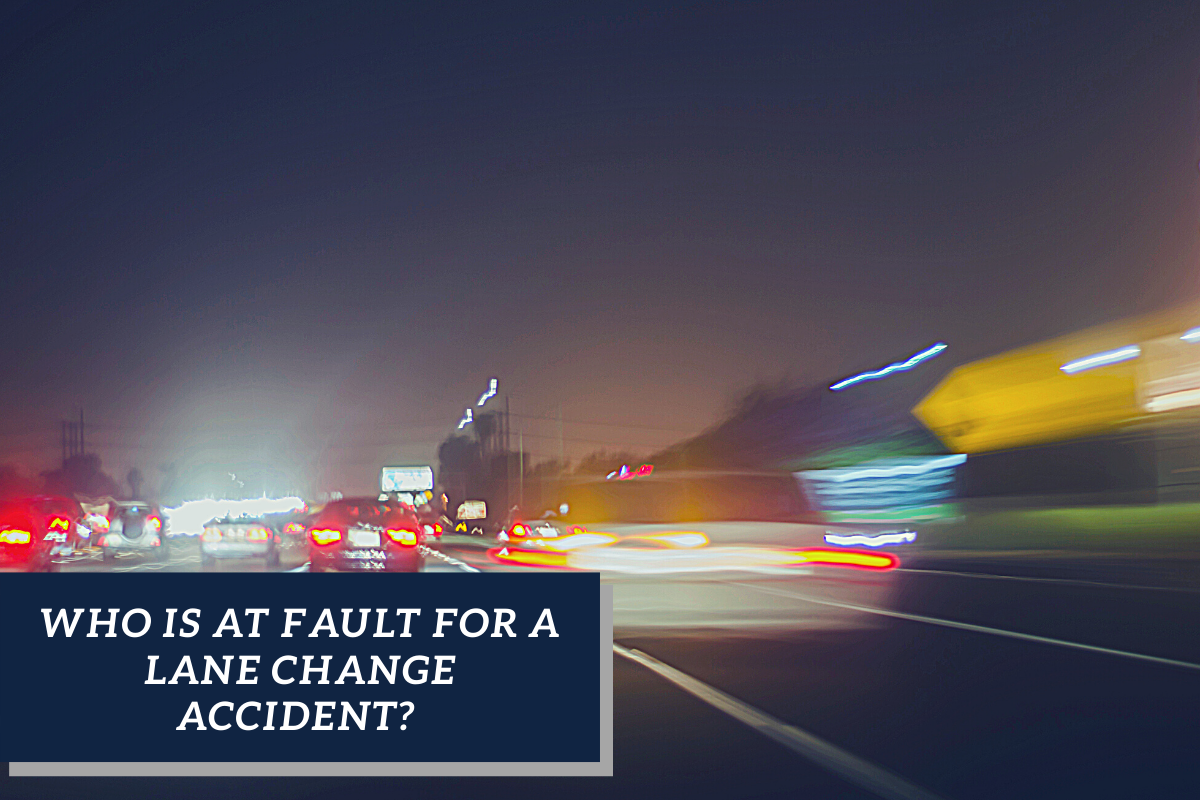
If you were injured in a car accident in Georgia that someone else caused, you could be entitled to pursue compensation for your injuries. However, for your case to be successful, you’ll need to prove that the other driver was liable for the accident. While liability might be straightforward in a rear-end collision caused by a texting driver, identifying the responsible party is not always so simple.
For instance, it can be challenging to figure out who was at fault if you were involved in a lane change accident. Lane change accidents often occur at high speeds and sometimes in heavy traffic. If you believe that another motorist was liable for the accident, you will most likely need the help of a seasoned car accident attorney to prove your case against the at-fault party.
Below, we will briefly discuss who might be liable for merging accidents and how liability is determined.
Who Is Liable if Someone Hits You While Merging?
Merging accidents are typically the fault of the driver changing lanes, though this isn’t the case 100% of the time. Liability is based on negligence. All motorists have a duty of care to operate their vehicles safely and prevent other motorists from being harmed. If a motorist breaches that duty somehow, they can typically be held liable for damages resulting from the accident.
When a driver decides to merge, either from an on-ramp or another lane, they have a responsibility to gauge whether it’s safe. This means checking their blind spots and glancing in their mirrors to ensure that no other vehicles are obstructing their path. Catastrophic car accidents can occur if a merging motorist fails to exercise caution when switching lanes.
Some of the most common types of negligence that lead to lane change accidents include:
- Failure to alert other motorists of their intention to change lanes using blinkers
- Failure to check mirrors before merging
- Neglecting to check blind spots for possible road hazards before switching lanes
- Getting distracted by another activity — such as texting, talking on the phone, adjusting the radio, or eating and drinking — while merging into another lane
- Failure to maintain the same speed as the motorists already traveling in the lane
While merging motorists are often responsible for lane change accidents, you’ll still need to be able to prove your claim using evidence to hold another driver accountable and recover compensation successfully.
Who Is Liable for a Sideswipe Accident?
A sideswipe accident occurs when two vehicles traveling alongside one another make direct contact. Sideswipe collisions commonly occur in areas where motorists are required to merge, such as when two lanes are reduced to one or on interstate on-ramps.
While it can be challenging to identify the liable party in a sideswipe accident because these accidents generally happen so quickly, driver negligence is usually a contributing factor. Common types of negligence that can lead to a sideswipe accident include failure to check blind spots and mirrors, driving faster or slower than vehicles already in the lane, distracted driving, and cutting other motorists off while merging.
Is the Driver Who Changed Lanes Always Liable?
As we’ve established, negligent merging motorists are often to blame for lane change and sideswipe accidents. However, liability doesn’t always rest squarely on the shoulders of the driver switching lanes. There are scenarios in which the non-merging motorist could be partially liable for an accident. A non-merging driver might be partly responsible if they:
- Tried to prevent the merging driver from entering the lane by reducing their speed
- Increased their speed to block the other driver from merging
- Followed another vehicle too closely to stop the merging motorist from entering the lane
- Refused to change their speed so that the merging motorist could enter the lane
- Tapped or slammed on their brakes to stop the other motorist from switching lanes
If you were involved in a merging accident, you should contact an accident attorney to discuss your case. A reputable Georgia car accident lawyer will have the ability to conduct an independent investigation of the crash and ascertain who was liable for the accident.
Determining Liability for a Lane-Change Accident
If you believe that another motorist was responsible for a merging accident you were involved in, you (or your attorney) will need to gather and preserve evidence to back up your claim. Some common types of evidence that are used to prove liability in lane change accidents include:
- Witness testimony
- Surveillance or traffic camera footage
- Driver testimony
- The official police report
- Photos and videos taken at the scene
- Dashcam footage
- Accident reconstruction expert testimony
- Medical records
- Cell phone records
Because Georgia is a comparative negligence state, you can still recover compensation for damages you suffered even if you are found to be partly liable for an accident. If you are no more than 50% at fault for the crash, then you can still bring a claim or lawsuit against the other motorist.
However, the amount of compensation you can recover will be reduced by the percentage of fault you had for the accident. For instance, if you were found to be 25% at fault for the accident, and the other motorist is 75% at-fault for the accident, you would still be eligible to recover up to 75% of the total damages.
Contact a Gwinnett County Car Accident Attorney Today
Were you injured in a lane change accident? If so, contact a Gwinnett County car accident attorney at Brauns Law Accident and Injury Lawyer, PC. Our attorneys have the resources to quickly collect and preserve evidence to back up your claim, document the damages you suffered, determine liability, and bring a strong case on your behalf. Reach out to schedule a free consultation today.


